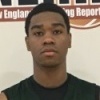#RealTalk - Conclusions of Rankings Revisited

The basic formula for evaluating players takes into account their physical tools (size, length, athleticism, fluidity), skill set (shooting, passing, creating), feel for the game (being able to think the game, react instinctively, and play with spatial awareness), and intangibles (character, work-ethic, competitiveness, and attitude).
Those criteria aren’t necessarily unique but it’s the ability to find the appropriate indicators of each and weigh them accordingly that leads to the best evaluations.
Over the course of the last three days, we’ve looked back on each graduating class to come out of our region since 2011 with hopes of illuminating any trends or commonalities among prospects who have exceeded expectations.
This study has been a sequel of sorts after conducting our first internal audit back in 2012 that examined the classes of 2007-2010.
That initial study pinpointed that there were certain tools that helped prospects defy levels. That is, players who were truly elite in one specific area, either three-point shooting or rebounding, were more likely to be able to create a niche for themselves at levels higher than the rest of their tool set would otherwise allow.
Those continued to bare out this time as well with Carl Pierre’s recent unexpected success being the latest example from behind the arc.
A growing trend this second time around wasn’t just three-point specialists, but shot-makers who could score and make plays in versatile ways, even if they weren’t highest level athletes. This trend is a logical one in the last six years as the college game has begun to emphasize freedom of movement, with officiating designed to restrict the level of contact defenders are able to utilize, thus enabling offensive players to thrive with more skill and less sheer explosiveness. Tyler Nelson, A.J. English, Maodo Lo, Francis Alonso, Charlie Brown, Geo Baker, and Rich Kelly are great examples of this. They were/are all excellent shooters, but also able to score in increasingly versatile ways as they continued to develop, despite being unable to truly differentiate themselves athletically.
The rebounding numbers continue to pan out as well. In fact, that’s the one commonality of all six frontcourt players we identified as having dramatically outplayed their ranking from 2011-2017. Gabas Maldunas pulled down 7.2 rebounds in 26.6 minutes as a freshman at Dartmouth back in 2012 while Gabe Levin did similar for Loyola Marymount in 2014. Ousmane Drame was a record setting rebounder at Quinnipiac, averaging 10.5/game as a junior and 11.2/game as a senior, while Bonzie Colson averaged double-figure rebounds at Notre Dame as a junior and senior as well. Nick Mayo is averaging almost 9 rebounds/game for Eastern Kentucky this year while Nathan Knight has been above 7/game at William & Mary in each of the last two years. Even Terry Tarpey, who was a wing at William & Mary, pulled down over 8 rebounds per game as an upperclassman.
What’s interesting is that these guys aren’t all good rebounders for the same reasons. Drame and Colson have long arms and magnetic hands. Levin had a super-high motor. Maldunas was mobile and quick off his feet with a nose for the ball. Similarly, rebounding wasn’t necessarily all of their best assets either. Mayo is going to be EKU’s all-time leading scorer and Knight flourishes in William & Mary’s offensive system. The bottom line though, is that regardless of how they get there and what else they bring to the table, rebounding the ball was a constant for big men who overachieved in the last six years.
While the value of shooting and rebounding continued to be clear, this most recent study provided other conclusions as well:
Hearts & Minds
While we called out the overachievers from the last six years by name, there were many more that failed to live up to expectations and while we weren’t going to say specific names, when that happens, our internal process is always the same. We investigate, talk to their coaches, and see what is preventing them from achieving as expected. Almost never does the answer have anything to do with their physical tools, those are too easy to assess during the initial evaluation process. Instead they fall into one of two categories:
Intangibles – There is so much that can go into this. Work-ethic, competitiveness, unselfishness, and, perhaps most importantly, entitlement. But more than 50% of the time, when a prospect doesn’t develop as expected it’s rooted in one of these areas. “He’s not a worker”…”he wants it handed to him”…”we can’t coach him”…”he’s listening to the wrong people” are things you’ll hear frequently from college coaches in these cases. Conversely, confidence can be a key to success. Not the type of boastful or fraudulent arrogance we often see, but the type that allows prospects to persevere through adversity and continue to believe in themselves even amidst adversity. That’s one of the reasons why A.J. Reeves is one of New England’s top two college basketball freshmen right now and why Spike Albrecht was able to defy the odds to earn a role at Michigan. Similarly, high-motor guys often end up over-achieving, especially if they pick the right level (more on that below). Levin, Tarpey, Duane Notice, J.R. Lynch, and Ikenne Ndugba best exemplify that.
Intellect – If it’s not about effort or approach, a player’s inability to reach their expected potential can often be traced back to their intellect. This is a tricky, because no scout wants to publicly say one prospect seems to be less intelligent than another, but there’s a huge correlation to success at the next level when prospects have to learn defensive concepts, substantial offensive playbooks, and still be able to play with an instinctive feel for the game on both ends of the floor. Defensively in particular, we think that if a player has certain physical tools, they’ll be able to defend at the next level, but as concepts get more complex (and coaches ask players to utilize different ones within the flow of the game) we see the impact of intellect prevent even gifted athletes from being in the right spot, take the appropriate angle, or rotate accordingly. Conversely, those with a high I.Q. are able to thrive even when giving up some athleticism because they are “always in the right spot” as coaches would say.
It's All About Fit
Of the 26 players we identified, only two – Colson and Albrecht – went to BCS level programs that were consistently in the NCAA tournament. While others like Cane Broome, Damion Lee, and Isaac Vann ultimately transferred up, the biggest correlation among players who outplayed their high school ranking rooted in their original decision-making process. They didn’t chase their highest offer but instead, whether consciously or not, found places where they were prioritized and had an opportunity to make an immediate impact. That is, the program they were going to was relying on them to be able to play right away from day one. That scenario typically allows players the opportunity to play through their mistakes more often and be on the floor, which despite how simplistic it sounds, is the one unmistakable common denominator for everyone who ends up overachieving. The reality is where a prospect goes to school matters, not just because it relates to minutes, but because it dictates who they’ll be surrounded, coaches, and influenced by.
There’s no greater example of this than Kellan Grady. Did we misevaluate him? Absolutely. But was that evaluation based on rational criteria (significantly older for grade, injury prone, and unable to consistently produce on the biggest stages until literally the final week of his high school career). We still believe it was. However, is it possible that Grady picked an absolutely ideal place at an ideal time to provide him immediate opportunity and tremendous development amidst the security of being surrounded by an otherwise veteran roster? Again, we believe the answer is yes.
Don’t misunderstand. We messed up, but as we said in last week’s #RealTalk, that’s going to happen to any evaluator, the key is determining whether or not the decision-making process was sound and what, if any, variables altered the trajectory of the prospect.
Cognitive Bias
Our study did reveal a pattern of sorts in our evaluation process, specifically with regard to high-major talent. Although not intentionally, we have been guilty of over-rating some local New England prospects and under-rating those who transferred into the prep ranks later in their careers. 2014 was a great example of this as we had local products Goodluck Okonoboh, Abdul-Malik Abu, Kaleb Joseph, and Paschal Chukwu ahead of current NBA players like Jonah Bolden, Devonte Graham, and Yuta Watanabe.
Candidly, this was a subconscious pattern, and one that can be potentially attributed to a variety of factors. Were we impacted by pressure from local AAU coaches advocating for their own guys? Had we just seen so much more of these players that we felt more at ease with them? There could be several cognitive biases that help explain the trend.
Regardless, it’s helpful to keep in mind as we grow but equally important to note it certainly wasn’t a constant (we appropriately had Reeves and Cormac Ryan ahead of Derek Culver last year but inaccurately thought Isaac Copeland was the top prospect in that same 2014 class referenced earlier).
Final Conclusions
The task of evaluating prospects is a thankless one because you enter into it knowing it is impossible to be right all the time and even the most accurate evaluators will be publicly attacked for whichever prospects end up proving them wrong. Regardless, the goal remains to develop best practices that rely on the most telling indicators of future success. We believe this study has helped us continue to do that.
Shooting and rebounding translate. Just as they have for a long time now.
Athleticism and physical tools are undeniably important, but hard to misevaluate.
Much more complex, but no less relevant (which often comes in contrast to public perception), is the mental part of the game ranging from a player’s work-ethic all the way to their I.Q.


 Derek Culver
Derek Culver
 Cormac Ryan
Cormac Ryan
 A.J. Reeves
A.J. Reeves